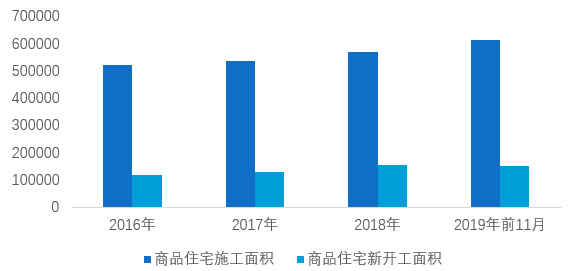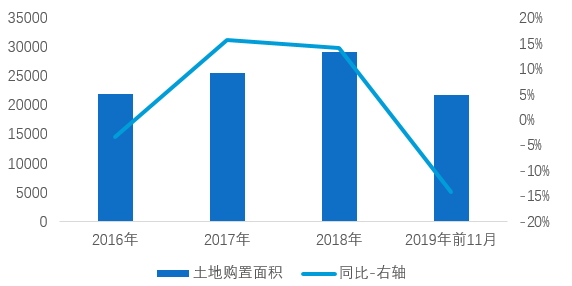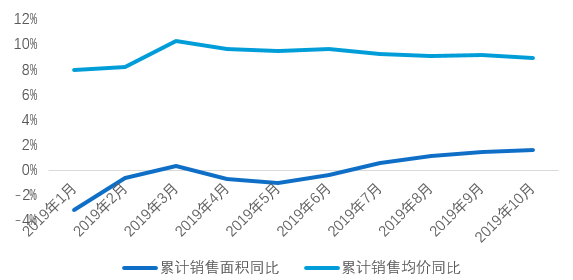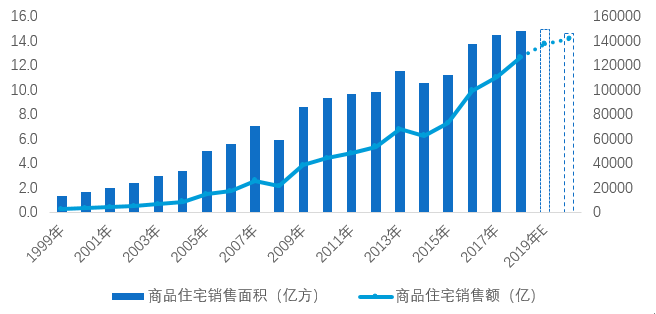Are these supporting forces next year? Will new home sales continue to hit new highs in 2020?
Editor’s note: This article comes from the WeChat public account “Shell Research Institute” (ID: gh_44da0ccc8400) a>, author: market research department.
This issue is a new house in the 2020 Real Estate Market Outlook series. More report content will be released one after another, so stay tuned.
—— Shell Research Institute
In 2019, although the policy end did not relax and re-emphasized “housing and living without speculation”, and the intensity of shed reform was significantly weakened (the number of shed reform starts is expected to decline by 45% year-on-year), the scale of new house sales continues to reach a new high, and it is expected that The floor space of commercial residential buildings reached 1.49 billion square meters, a year-on-year increase of 0.9%, and sales reached 13.8 trillion, a year-on-year increase of 8.9%. What is the internal reason for this? How will the new home market go in 2020, and will the sales scale continue to grow?
Let’s first review how the new house market will remain high in 2019 without major positive factors?
The main reasons are three points. First, the heavy supply of new homes and the price cuts by housing companies have pushed demand release beyond expectations. In the first 11 months of 2019, the construction area and new construction area of newly built commercial residential buildings nationwide increased by 10.2% and 9.3% year-on-year respectively. Second, the shed reform has a certain lag effect. The logic is that the special loan for shed reform will be in place later than the credit granting time, so the funds that were granted last year but only in place this year offset the negative impact of the decline in construction this year. Third, the existence of the long tail effect. The changes in the market are clearly transmitted from high-energy cities to low-energy cities. The eastern and central cities’ markets have significantly declined under the tightening of policies, but the western capital cities are still slowly growing. The transaction did not fall sharply.
Picture: Construction area and new construction area of new commercial residential buildings nationwide (10,000 square meters)

Data source: National Bureau of Statistics
Picture: Some western cities with a year-on-year increase in the area of new commercial residential buildings sold in 2019
Data source: Shell Research Institute
Is this support still next year? Will new home sales continue to hit new highs in 2020?
First of all, the support for the new home market will weaken, especially in third- and fourth-tier cities, which account for more than 50% of the new home market, and sales will be unsustainable, which will drive down the overall transaction volume. From the perspective of the supply side, the land purchase area of real estate companies in the first 11 months of 2019 decreased by 14.2%, and the supply of new houses may decrease in 2020, and the supply side’s support for sales will weaken. From the demand side, the monetization of tents in overdue tents in the early stage of overdraft housing demand in third-tier and fourth-tier cities will bring downward pressure on the market next year as subsidies and subsidies subsidize. Only half of 2018. Finally, the current increase in sales is the result of “swap in price.” Since the second half of the year, the cumulative sales area has increased year-on-year, but the cumulative average price has decreased year-on-year, and the average monthly price has fallen. The head real estate companies have cut prices significantly in third- and fourth-tier cities. As a result, new home sales are expected to turn down in 2020.
Picture: National land purchase area (10,000 square meters) and year-on-year

Data source: Shell Research Institute
Picture: Year-on-year cumulative sales area of newly-built commercial residential buildings nationwide and cumulative sales average price

Data source: Shell Research Institute
Second, the decline will not be too great. There are two reasons for this: First, the current key cities have liberalized their account restrictions, which is conducive to the growth of new house transactions in key cities. Shell transaction data show that Chengdu, JinanThe proportion of home buyers in the “non-provincial capitals of the province” in Xi’an and other cities continues to increase. It can be seen that the real estate market in these cities can still enjoy the dividends of population and urbanization, which will support the long-term new housing market. Second, according to market laws, there is generally a “gradual policy digestion period” in the market, usually three years. The internal logic is that every period of time, there will be a certain number of people who need to release or change their homes (“1000 “Purchase of people’s house” logic), under steady house prices, purchasing power will slowly increase over time. From 2019, the volume of cities under large-scale control in 2016 (Tianjin, Shanghai, and Nanjing) began to increase after a continuous decline, and the scope of cities under control in 2017 was larger. According to this logic, demand may be possible after 3 years. Slow recovery will form a certain support for the new housing market in 2020.
Under the combined effect of downward pressure and supporting factors, we judge that the size of the new housing market will shift in 2020, and there will be a decline, but the decline will not be too great. It is estimated that in 2020, the sales area of newly built commercial residential buildings nationwide will decline slightly by 2% to 1.46 billion square meters, the average price will increase by 5%, and sales will increase by 3% to 14.16 trillion.
Picture: Sales area and sales trend of new commercial housing

Data source: National Bureau of Statistics, Shell Research Institute
Disclaimer: The information contained in this article is the independent view of the Institute ’s analysts, does not represent the opinions of the institution, nor does it guarantee the accuracy and completeness of the relevant information. The content and opinions described in this article are for reference only and do not constitute market transactions and investment advice. The copyright of this article belongs to the Shell Research Institute. All rights reserved. No institution or individual may reproduce, copy, publish or cite any part of this article without prior permission.